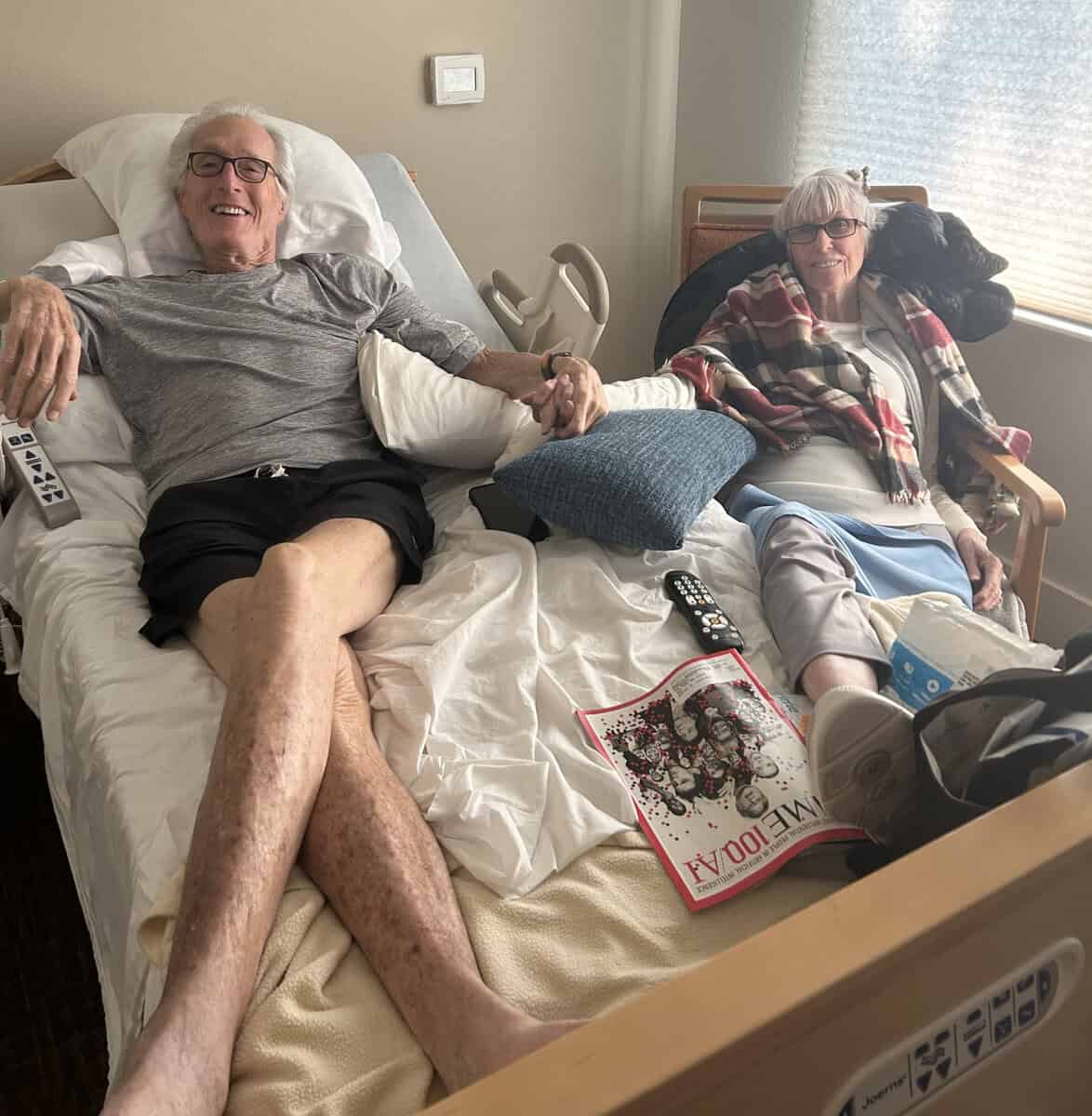Green Goes to Portland…and Comes Back Greener
by Bob Buddemeier
On November 1st, the RVM van, with Drew Gilliland at the helm, set out through the rain for Portland. Aboard were executive director Dave Keaton, Gini Armstrong (the chair of the RVM Green team), Alysse Furukawa, and Bob Buddemeier. The destination: a meeting at the Rose Villa Senior Living Community, entitled “Climate Resilience Summit.”
The conference was sponsored by a consortium of Green Teams from six Portland-Area CCRCs (including two PRS facilities) that have been working together for over five years. We’ve described RVM’s discovery of this group before (https://thecomplement.info/2024/08/13/climate-resilience/) – starting out to collaborate on sustainability-oriented projects, they shifted their focus to Climate Resilience when the expanding threats posed by Climate Change made it clear that sustainability was not a realistic goal.
Climate Resilience is the capacity of individuals and institutions to resist and recover from damages inflicted by changing climate. Ideally, it includes both mitigation of and adaptation to the effects of climate change.
The consortium has identified, and is in the process of implementing, a wide range of Resilience-building practices. Their Best Practices document contains multiple recommendations and examples of actual accomplishments in several categories:
- Energy Source and Use
- Food
- Transportation
- Land and Water Use & Biodiversity
- Waste Reduction and Recycling
These goals and suggested methods provided the background and organizing themes for the meeting, which consisted of:
- A keynote lecture on “Housing, Health and Heat”
- An interview with two CCRC CEOs about innovations on their campuses
- Breakout Sessions where mixed CCRC residents exchanged ideas
- Wrap-up session: each campus administrator presented two top take-aways.
The RVM group was uniformly impressed with the attendance and organization of the meeting, and the enthusiasm and diversity of participants. Particularly noteworthy was the atmosphere of cooperation; even when asked specifically about conflicts, the participants uniformly described amicable collaboration and mutual support among residents, and between residents and administration
To solidify the contacts and progress made, a follow-up Zoom meeting was held on November 18, with Gini Armstrong, Laura Monczynski, and Bob Buddemeier participating along with members of the Consortium Executive Board. Possibilities for future meetings and expanded collaborations were discussed. Following discussion of communication needs, Gini, Bob Buddemeier, David Rikert (Terwilliger Plaza), Gary Smith (Willamette View) and Steve Higgs (SAGE) were appointed to discuss the possibility of establishing a Consortium website; they will report to the January Zoom meeting of the Consortium Executive Board.
Overall the Summit meeting and contacts before and afterward have stimulated a rapid growth in information exchange and cooperation with other CCRCs that will strengthen and influence local Green Team initiatives that are currently being developed and refined. As a result of RVM Administration input to the Green team and these growing external connections, a revised description of the Green Team and its activities has been prepared for posting on MyRVM in the Activities & Amenities menu section.



 So, I found myself enrolled in 3 online genealogy sites, and struggling to crawl up the trunk of my beetle-infested family tree. It was surprisingly hard going – but I was not alone. To my wonder and amazement, Rita Derbas appeared, riding out of the west and wearing the hat (she has many) of the lead sprout of the RVM genealogical tree (a.k.a. the Trace Your Ancestors Genealogy Group (TYAGG) – see the activities and Amenities page in MyRVM, or Bits & Pieces). Rita has been digging into her roots for over 40 years, and is part of the group that started TYAGG back in the pre-covid days.
So, I found myself enrolled in 3 online genealogy sites, and struggling to crawl up the trunk of my beetle-infested family tree. It was surprisingly hard going – but I was not alone. To my wonder and amazement, Rita Derbas appeared, riding out of the west and wearing the hat (she has many) of the lead sprout of the RVM genealogical tree (a.k.a. the Trace Your Ancestors Genealogy Group (TYAGG) – see the activities and Amenities page in MyRVM, or Bits & Pieces). Rita has been digging into her roots for over 40 years, and is part of the group that started TYAGG back in the pre-covid days.
 “Whistling past the graveyard” is an informal idiom that means to act or speak as if one is not afraid or is relaxed when they are actually nervous or afraid… It can also mean to ignore a threat or problem, or to proceed with a task while ignoring an upcoming hazard, hoping for a good outcome. — Google AI summary response to a definition search.
“Whistling past the graveyard” is an informal idiom that means to act or speak as if one is not afraid or is relaxed when they are actually nervous or afraid… It can also mean to ignore a threat or problem, or to proceed with a task while ignoring an upcoming hazard, hoping for a good outcome. — Google AI summary response to a definition search.